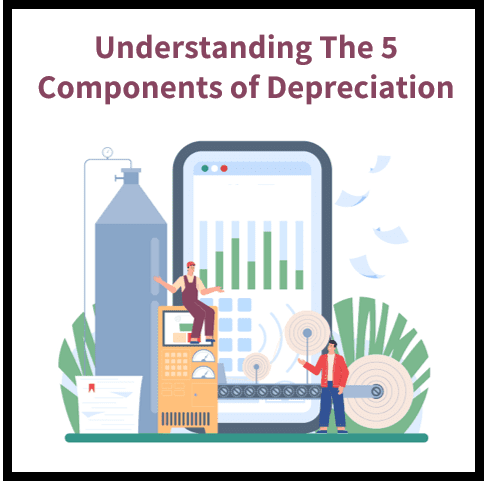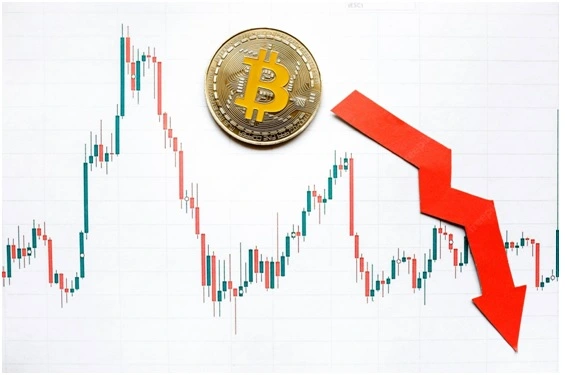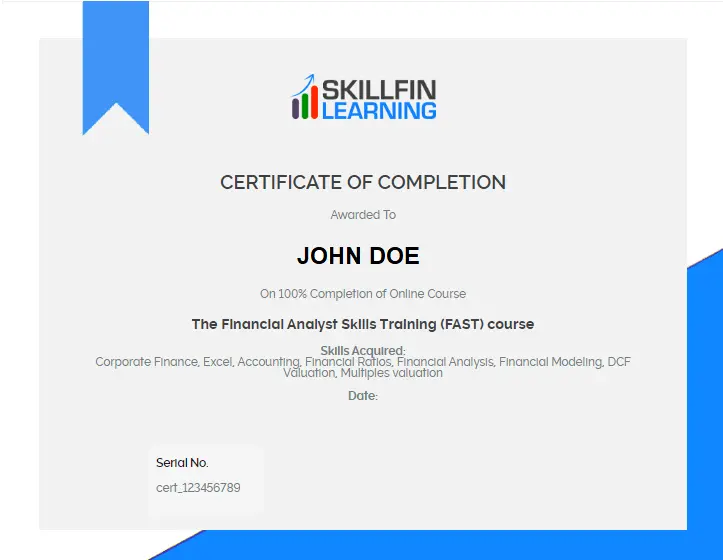Depreciation is an accounting term that refers to the gradual reduction in value of your assets. Since these assets are not indestructible, they must be recorded as losing value over time. Depreciation can seem like an obscure accounting concept, but it has a very real impact on your investment and its potential returns.
Understanding depreciation and how it applies to your business will help you develop more effective financial strategies for the long-term sustainability of your company.
Depreciation is a useful tool for businesses because it reduces taxable income from capital expenditure in any given year and is cheaper than reducing reported profits through deductible expenses in later years. It’s also essential for tax purposes – depreciation helps you account for asset usage over time rather than reporting the entire cost of an asset at once as a fixed expense.
What Is Depreciation?
Depreciation occurs when you record the reduction in value of your assets through time. This is a crucial concept for business and financial reporting because an asset’s value is frequently greater than its initial cost. For example, if the cost of a computer is $2,000, you can’t include $2,000 in your financial records as an expense.
Instead, you’ll record the computer’s value each year as it decreases to account for the fact that it will eventually fail and need to be replaced or repaired. When you record this expense, you’re actually depreciating the asset’s value rather than spending money out of pocket. The difference between the asset’s initial cost and its value each year is the amount you’ll record as an expense.
The 5 Components of Your Depreciation Schedule
The life of your asset – The depreciation schedule will vary depending on the life of the asset and its potential for resale. The length of time between the asset’s purchase and retirement will affect how it’s recorded in your financial statements.
For example, if you purchase a machine for $100,000 but expect to use it for 10 years, you’ll record $10,000 as an expense each year to account for the machine’s gradual reduction in value. When the asset finally reaches its end of life, you’ll retire it from your financial records. This will reduce your annual expenses and increase your taxable income for that year.
The original cost of your asset – The amount you originally paid for the asset will factor into your depreciation schedule. You purchased the asset with a certain amount of money and will record the reduction in value over time as an expense. The rate of depreciation – This is the rate at which your asset’s value diminishes over time.
Investors and lenders will use this information when calculating your asset’s potential future value to determine the true value of your business. The shorter the length of time for depreciation, the higher the asset’s value. The longer the depreciation period, the lower the asset value.
Tangible Asset Depreciation Schedules
Tangible assets include fixed assets such as real estate, vehicles, or machinery. You expect these assets to last beyond one year, and their resale value is low or non-existent. The depreciation schedule for these assets is based on their useful lives. A fixed asset’s useful life is the amount of time that asset is expected to last.
Computer Equipment and Software Depreciation Schedules
Fixed assets with low or no resale value, like computer equipment and software, have specific depreciation schedules that account for their useful lives. You’ll record the amount you paid for the asset, including installation and maintenance costs, as an expense each year.
Movable Asset Depreciation Schedules
Movable assets are used for short-term profit-making activities, but aren’t used up like a tangible asset. This could include business inventory items, raw materials, or commodities. The sale of these items contributes to your company’s daily operations, but is not expected to be used up over time. In these cases, you’ll record a straight-line depreciation schedule.
Intangible Assets
Intangible assets are assets like intellectual property, goodwill, or customer data that can’t be touched or sold. You’ll record intangible assets as amortized expenses over time rather than as fixed expenses. Amortization is the process of recording regular expenses against a single large initial amount over a set period of time. This method is applied to intangible assets with high initial value that has the potential to generate high future values over time.
2 Ways to Understand Depreciation and its Impact on your Business
Depreciation isn’t something that you can completely understand simply by reading this article and doing a bit of research. In fact, it’s a complex and ever-evolving accounting concept. There will be times when it seems as if you need a degree in accounting just to understand your financials.
3 Steps to Understand Your Depreciation Schedule and Investment Strategy
Analyze how your assets are being used – You should be able to track the age of your assets and the amount of time they are being used for in your financial statements. While depreciation calculations are primarily based on this data, you can also include notes detailing how and when you used your assets.
This will help you better understand how your assets were used over time. Data can be deceiving. By tracking when you use your assets and how long you use them for, you’ll have a better understanding of the actual value they are generating over time. This will help you to create more effective financial strategies that maximize your investments.
How do you calculate depreciation?
There are many different ways to calculate depreciation depending on the type of asset used in your business. You can use calculators available online to determine the proper schedule for your assets or calculate it manually using formulas. The simplest way to calculate depreciation is by using the straight-line method.
This requires you to record a fixed annual expense each year that will gradually reduce the value of the asset. This method is the simplest and most efficient way to calculate depreciation for most businesses.
Summing Up
When you properly understand depreciation, you’ll be able to make better financial choices for your business. You can use this concept to reduce your taxable income in any given year, but you can also use it to estimate the true value of your assets for investors or lenders.
There is a lot to learn about business, but one thing is certain: knowledge and understanding are key. Investing in assets is an important part of any business plan. Having a basic understanding of depreciation can help you maximize your return on investment by selecting assets that have a longer lifespan and will provide greater value over time.




